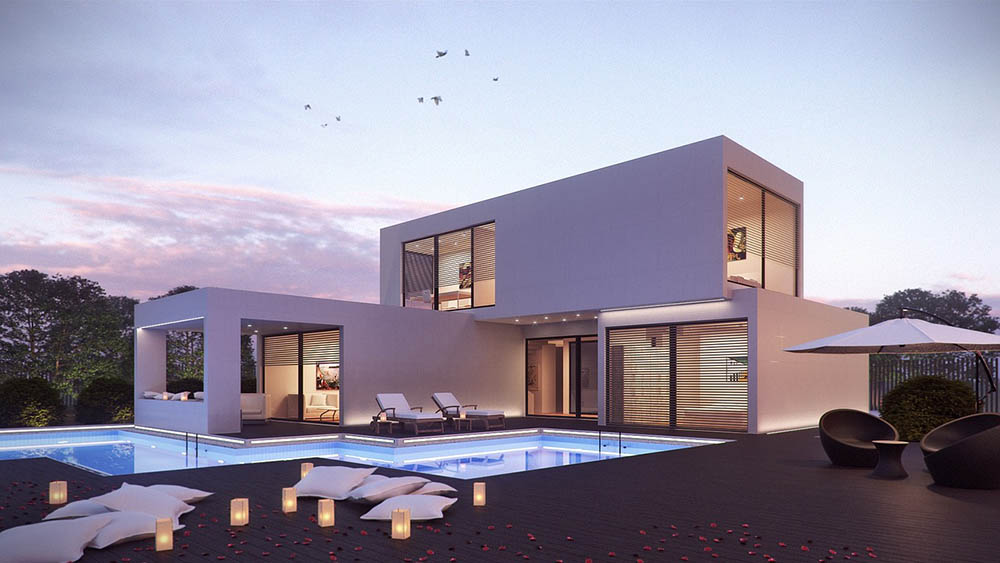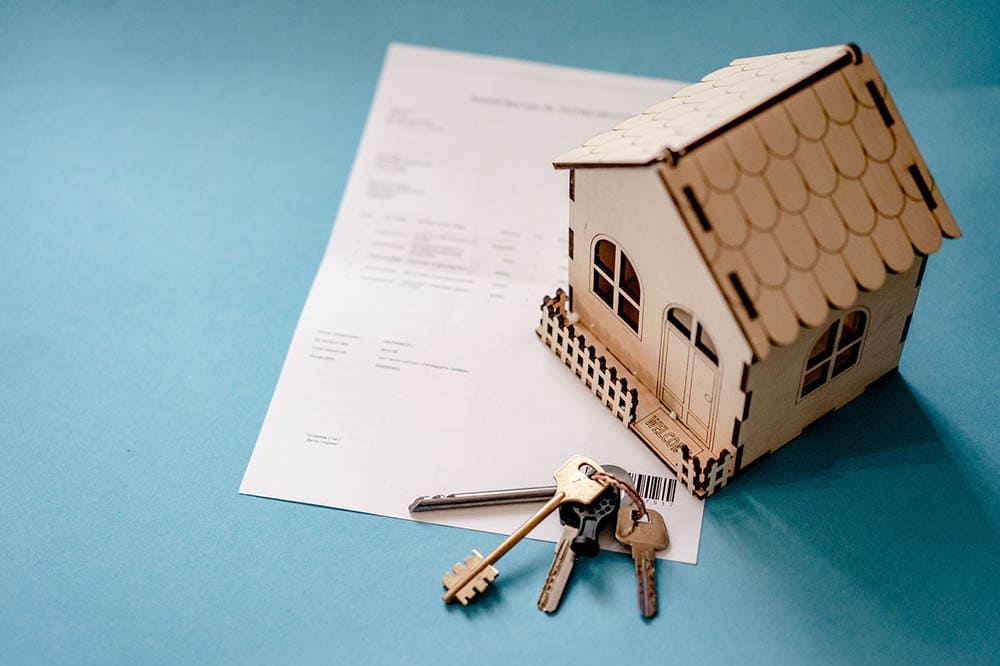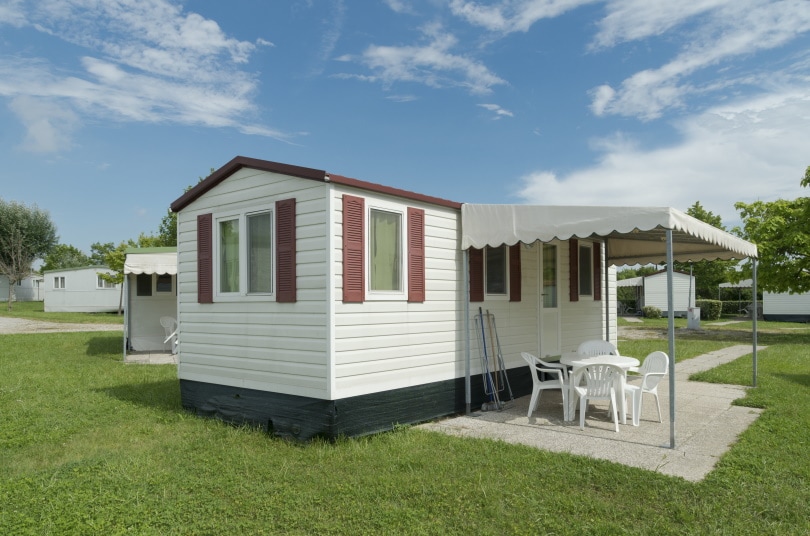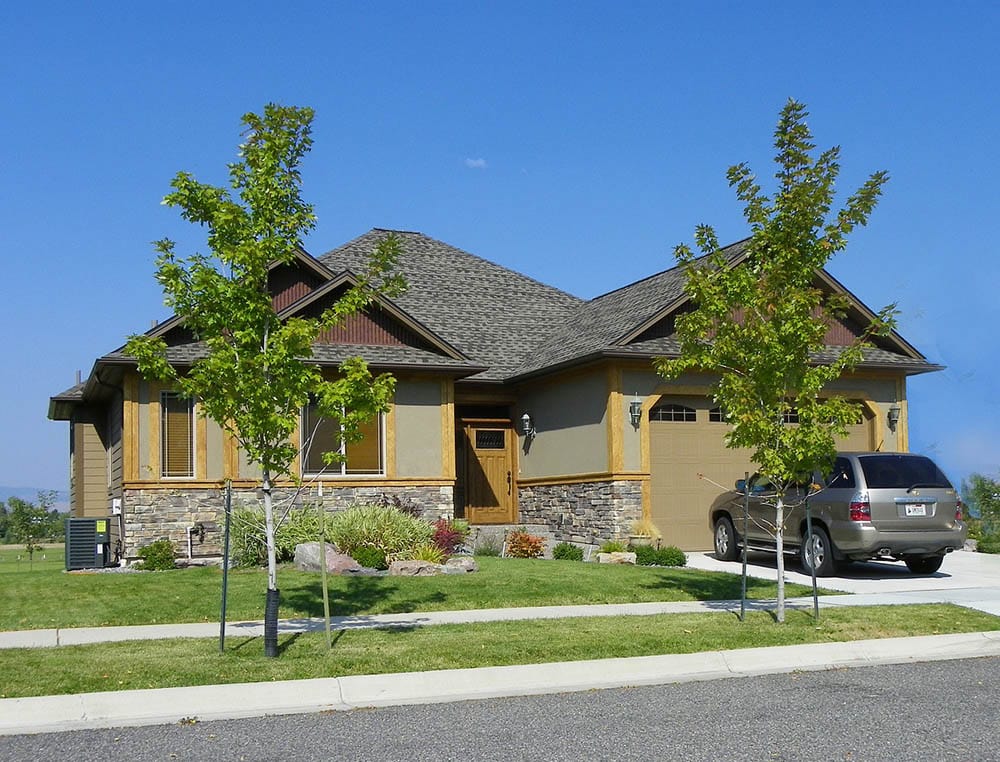What Is A Manufactured Home? What You Need To Know!
-
Pete Ortiz
- Last updated:

The good old site-built homes are great, but they do cost a lot. And, with the economy being as unpredictable as ever, people in the US are looking for alternatives. That’s when manufactured houses come in. They’re available at a much lower price and take significantly less time to build. But what is a manufactured house, exactly? Can it serve as the ultimate replacement for a traditional house, or not?
What are its pros? What about the cons? That’s exactly what we’ll talk about in this article! We’ll go over the very concept of manufactured houses, the different types, and their best uses. If you’re in the market for affordable housing, this could be it for you! Read our guide carefully, pay extra attention to the advantages and disadvantages, and only then decide. Alright, let’s get to it!
 How Does it Work?
How Does it Work?

Have you heard about prefabricated homes, also known as prefabs? Well, a manufactured house is a type of prefab home. Built and assembled off-site (usually in large factories), manufactured houses are then transported to the destination via a towing vehicle. In the US, a manufactured house is a “dwelling unit”, with a minimal size of 320 square feet. On average, it lasts for 30–55 years. But how does it work, though? Like most prefabricated buildings, these houses have a permanent chassis.
It allows the factory to not only manufacture but also transport the house. The best thing about this design: you’re not bound to the initial location. Let’s say you don’t like the increased utility bills in your area. Well, you can literally move the manufactured home to a new site! More importantly, thanks to large-scale production, manufactured houses are significantly cheaper than full-fledged, stick-built houses (10–35% cheaper, to be exact). Plus, they are built much faster, which is also a big pro.
How Can I Buy a Manufactured House?
In the US, if you want to buy a manufactured house, it’s best to turn to retailers. This is true both for new and old (pre-owned) houses, by the way. Real estate agents may also have various manufactured home choices for you. Alternatively, in some American states, you are allowed to buy it directly from an owner. Still, the most common and safest option is to purchase it through a retailer.
In many ways, the process will be like buying a vehicle. All you’ll have to do is visit the retailer’s sales center. There, you’ll find dozens of model homes to check out. It’s always better to see the house with your own eyes than on the Internet. Again, the best thing about manufactured houses is that they don’t take forever to build. At the sales center, customers can pick between different plans (single-section or double-section floor pans), layouts (the number of rooms), and sizes (measured in square feet).
Next, they choose the finish, some customized, personalized features, and order the house during a single visit. The retailer/dealer, in turn, takes care of the transportation and installation of your new home. This doesn’t take much time, either. With manufactured houses, the options are trailering and towing. So, if you want, you can hire a third-party heavy haul transportation company to handle that.
What are the Different Types of Manufactured Houses?
Right now, there are roughly 7 million manufactured houses in the US and 22 million people live in those houses. However, to someone who’s just learning their way around this concept, it can be a bit challenging to differentiate between the various terms. Some experts call it a modular house, while others go with mobile homes. Then there are the pre-cut homes and panelized houses. So, what are these types of housing all about? Let’s break it down below:
Mobile House

Built on a frame, and with tires attached for easy transportation, mobile houses are exactly that—mobile. The first mobile homes were introduced in the early 1900s. These days, this term is only used to describe homes that were built before 1976. Anything that was constructed after that is automatically called a manufactured house. This has to do with the HUD (Department of Housing and Urban Development) regulations concerning technical specs.
Manufactured houses are completely constructed in a factory and only then moved to your desired location. On average, it takes a team of experienced professionals 2–3 days (or up to a week) to assemble the house on site (including the utilities). But you’ll have to wait for 3–4 months after ordering a manufactured house before you can move in. This is still quite impressive. For comparison, in the US, companies require at least 7–8 months to build a house from the ground up.
Panelized House
In contrast to mobile/manufactured homes, pre-cut houses are built one wall at a time. The doors and windows, in turn, are placed into those walls. So, when a pre-cut house arrives at the buyer’s location, the crew has to connect the walls on-site. Yes, it’s like putting a puzzle together. Panelized houses are pretty cheap but take more time to assemble.
Pre-Cut Houses
So, what sets pre-cut houses from all the other types? They only consist of the exterior. That means you will have to pay extra for the wires, plumbing, and exterior work. This is important: at a glance, pre-cut houses are very cheap. However, contractors only indicate the cost of the “naked” walls—the exterior. Therefore, you’ll probably end up paying more for this house than, say, a panelized or manufactured home.
What About Modular Houses?
The terms “manufactured” and “modular” homes are constantly used interchangeably, but they are not the same thing. The biggest difference: while manufactured houses sit on top of a steel frame (with axles and wheels), modular homes are attached to a permanent foundation. Built from premium-quality materials, modular houses are constructed room by room. When you order such a home, the factory or retailer transports the various parts/rooms separately.
Modular homes arrive at the destination with the doors, windows, and even the paint already in place, and you can move into the house the moment it’s put together. The biggest advantage of modular houses over manufactured ones is that financially, they’re treated the same as homes built on-site. But they need to meet the local laws (permits are required). Besides, you’ll have to pay more for a modular home compared to a manufactured house, and it can NOT be moved.
Where Is It Used?

The initial idea behind manufactured houses was easy, hassle-free relocation. At first, these homes were targeting nomads, people with “mobile” lifestyles. But, in the 50s, the scope changed, and factories started to market manufactured houses as a form of primary housing: affordable, portable, but also designed to be permanently installed, if need be. These days, manufactured houses aren’t very mobile, and most owners prefer to keep them in one place—permanently.
It doesn’t matter whether you live up north or down south, though. Manufactured houses aren’t “afraid” of harsh winters or humid springs. The same is true for tornadoes and other natural elements and environmental factors. If you’re a bit strapped for cash right now but still want to buy a house, a manufactured house might be a reasonable investment. But where can you build/install a manufactured house? And what does the government have to say about that?
Loans, Permits, and Zoning Restrictions
If you’re planning on living in a manufactured house community (a common practice in the United States), you’ll have to pay not only for the land but also for the utilities and services. There are lots of different communities out there, including land-lease, resident-owned, budget, family-focused, and luxury communities. On average, they charge $500–700 per month for rent. Keep that in mind before you write the budget for this project.
And if you own a piece of land and want to install a manufactured home there, don’t forget about zoning restrictions. These vary depending on the state: check with the local authorities. While you’re at it, familiarize yourself with the requirements for electricity, plumbing, the building and septic permits, and more. If you “build” a manufactured house without permits, you’ll have a problem on your hands.
At first, the government will only issue a warning, and you’ll have to pay a (relatively) small fee. The second warning will come with a much larger financial penalty. Furthermore, the authorities might force you to remove the house. So, be very careful with the permits and make sure you’re building in compliance with city and state laws.

Advantages of a Manufactured House
Alright, now let’s take a quick look at the biggest pros and cons of manufactured homes. Before you go ahead and pay hard-earned cash (or use a loan), consider both the advantages and disadvantages. This way, you’ll have a clear image of what to expect from a manufactured house and whether it’s the best option for you. Here are the pros:
- Short construction times. This is achieved thanks to a streamlined process and abundance of materials.
- Low probability of a delay. Manufactured houses are built in large facilities, protected against natural elements. These factories rarely miss deadlines.
- You get to choose the finish and features. Manufactured houses allow a certain degree of personalization, both on the exterior and the interior.
- These houses are built in compliance with the HUD code and follow strict US safety standards.
- Manufactured homes are significantly cheaper than stick-built houses. You can buy one for as cheap as $70K in certain states.
- You can “pack” the house and move to a different destination whenever you want to.
- Energy Efficiency. That’s right: manufactured homes are more energy-efficient than site-built houses. The top-quality furnaces, fixtures, and water tanks make sure of that.
Disadvantages of a Manufactured House
And here is a list of the biggest cons of manufactured homes:
- Might be hard to find the right location. Suitable land for a manufactured house isn’t always easy to find. Plus, it may cost a lot.
- Lack of financing choices. Manufactured houses tend to cost more in loans and have higher interest values.
- Extra expenses. As mentioned, the manufactured home communities aren’t particularly cheap and charge both for the land and the utilities.
- Not a full-fledged house. For many people, the tag of a mobile house can be a con. If you’re 100% happy with it, this won’t be a disadvantage.
- Low long-term value. Manufactured houses don’t always increase their market value over time. Sometimes, they even depreciate.
 Frequently Asked Questions (FAQs)
Frequently Asked Questions (FAQs)
Last, but not least, take a quick look at our detailed answers to some of the most common questions about manufactured houses:
Will a Manufactured House Be the Right Choice for Me?
It largely depends on what you’re in the market for and how big your budget is. Manufactured houses are rather cheap, and retailers build them at an impressive speed. At the same time, it’s very hard to get a great mortgage loan for a manufactured house. Furthermore, in the long run, it won’t be a particularly beneficial investment, as the market value will only go down. So, again, it’s up to you to decide whether a manufactured house is your “cup of tea” or not.
What are the Financing Options for a Manufactured House?
Unfortunately, the financing choices are rather limited compared to a traditional, site-built house. Even if you plan on putting the house on your own land, the house won’t be recognized by the state/city as real estate. Instead, it will be registered as personal property. That leaves you with the only option of a chattel loan. In contrast to a mortgage loan, it has much higher interest rates, not to mention shorter terms. Chattel loans mostly apply to vehicles and other machinery.
Do Manufactured Houses have Wheels?
Yes, modern-day mobile and manufactured houses do have wheels. That makes it easier to haul them from the factory to the desired location. However, when the house arrives at the location, the axles and wheels are removed, and the house is then “installed” on a set of jacks. Next, steel/cement piers are placed under the chassis, along with hurricane straps to make sure the house withstands strong winds and even tornadoes.
Are Manufactured Houses Constructed Differently from Stick-Built Homes?
The materials used to build these houses are almost always the same. But the approach is, indeed, different. As mentioned, manufactured homes are built in factories. Site-built houses, in contrast, are built on-site (yes, just like the name suggests). That’s pretty much all you need to know about the differences.
- The budget for a new home is limited
- You want to get a house ASAP, no delays
- You don’t own any land/real property
- You want to buy a mobile house
- You only invest in stick-built houses
- Low interest rates are what you’re in for
- Value appreciation is a top priority
- You can’t find a suitable location
Conclusion
Manufactured houses are a relatively new technology but they’re getting more popular each year. Their biggest “selling points” are the affordable price, short construction period, and mobility. Housing in the US is very expensive these days, which is why millions of people are choosing manufactured houses as their homes. This is especially true for young and struggling families and retirees looking to settle.
They do have their fair share of pros and cons, of course. Some people like this concept and are ready to close their eyes to certain imperfections. Others want to save up for a “full-fledged”, site-built house. One thing is for certain: manufactured houses aren’t going anywhere. So, use this article as your guide into the world of mobile, pre-cut, and panelized houses, and we’ll see you next time!
Featured Image Credit: Giovanni_cg, Pixabay
Contents

 How Does it Work?
How Does it Work? Frequently Asked Questions (FAQs)
Frequently Asked Questions (FAQs)